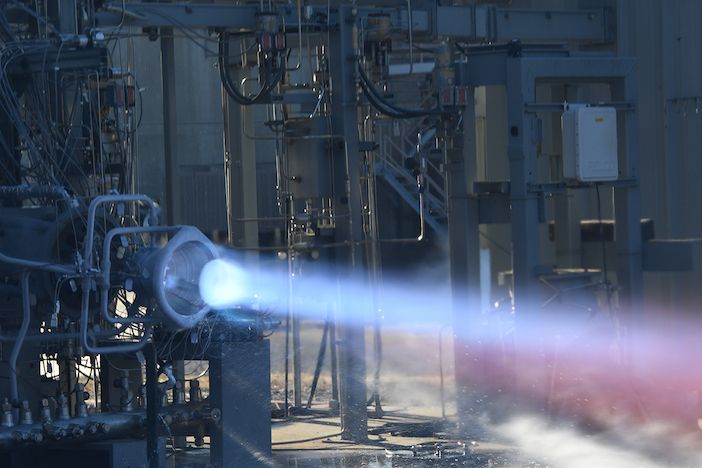Engineers at NASA have conducted a series of hot-fire tests to show that two additively manufactured engine components – a copper alloy combustion chamber and nozzle made of a high-strength hydrogen resistant alloy – could withstand the same extreme combustion environments that traditionally manufactured metal structures experience in flight.
NASA wants to use 3D printed rocket engine parts to enable reductions in manufacturing costs and build time for spacecraft and could use the parts in future lunar landers.
Tom Teasley, a test engineer at NASA’s Marshall Space Flight Center in Huntsville, Alabama said, “This 3D printed technology is a game-changer when it comes to reducing total hardware manufacturing time and cost.
“These hot-fire tests are a critical step in preparing this hardware for use in future Moon and Mars missions.”
The testing program for the engine parts, which took place last month, involved 23 hot-fire tests for a total duration of 280 seconds over 10 days. Throughout the testing, engineers collected data, including pressure and temperature measurements in hardware coolant channels and the main chamber, and high-speed and high-resolution video of the exhaust plume and chamber throat. Engineers also calculated the chamber’s performance and how efficiently the engine used propellant overall.
The high-strength iron-nickel superalloy nozzle was printed using a method called laser powder directed energy deposition, which deposits and melts the metal powder locally to create freeform structures. This method allows engineers to manufacture small and large-scale components, as demonstrated in a separate NASA R&D project called Rampt.
The tests were a part of NASA’s Long-Life Additive Manufacturing Assembly (LLAMA) project, which aims to enable the use of 3D printed parts in spacecraft and launch vehicles. Next steps in LLAMA will be to perform additional hot-fire tests to further demonstrate and validate the durability of the engine components.





